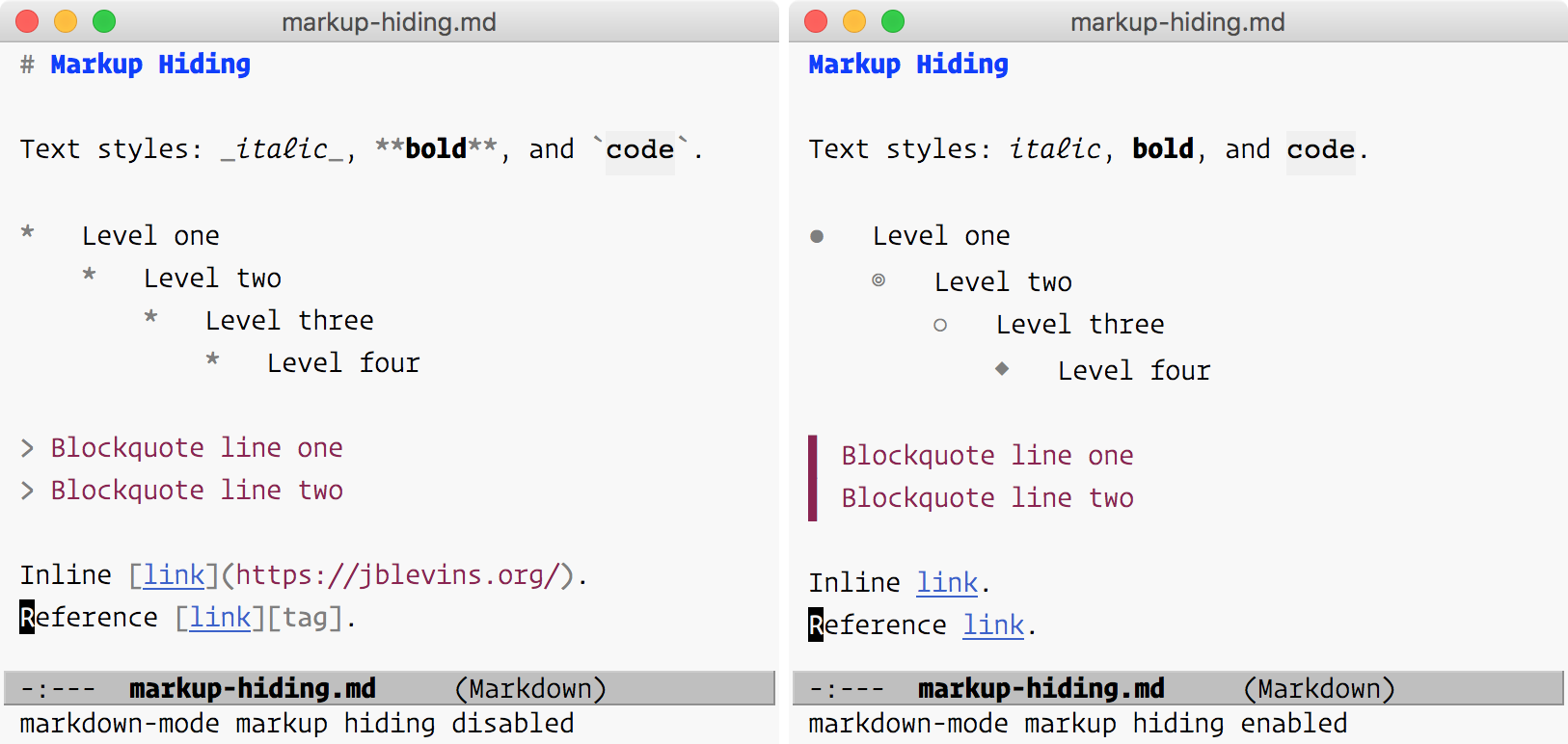
When you create a document in dotCMS that uses Markdown, the document will also recognize all HTML tags. Please see Mixing Markdown with HTML, below. However you can still use HTML formatting with specific styling within a Markdown document. Other than the formatting characters supplied by Markdown, can't apply specific styles to individual text elements within a markdown-formatted block of text. When you use Markdown in dotCMS, dotCMS automatically applies standard styling to your Markdown-formatted text based on a pre-defined style sheet that ships with dotCMS. Note that most markdown formatting does not require a closing tag or character. Markdown tags use simple characters and text conventions to allow the most common types of HTML formatting, without using HTML tags. This list of examples was taken from, which has popularized markdown to the point that it has become a defacto web standard. Markdown allows you to write using an easy-to-read, easy-to-write plain text format, which then converts to valid HTML for viewing on dotCMS. This document describes the most commonly used markdown features using this syntax.
#Markdown indented codebox code#

You can specify a slew of languages, mostly by their file extensions: cs,ts,js,html,css,md,xml,php,py,prg,cpp,bat,iniĪnd many more. Using this approach, the following HTML syntax block in Markdown:

#Markdown indented codebox plus#
GitHub flavored code blocks are more explicit about the code representation by not relying on leading spacing but rather using a triple back tick plus a syntax language code delimiter at the beginning and triple backslashes at the end of a code block. Especially auto-detection may vary significantly which is why we recommend you use GitHub flavored Code Blocks. The behavior of the preview (MM uses highlightJS) may differ than what you may see on a target site such as GitHub as different syntax highlighting tools are used. Preview and Live Site Code Rendering Differences Indented code blocks try to identify syntax based on auto-discovery - here the language is assumed to be a c-style language (c# in this case), but this may not always be 100% accurate. Renders into a code block like this: var config = new WeblogConfiguration() So, this markdown (with 4 leading spaces or a tab): var config = new WeblogConfiguration() Markdown considers any text indented with 4 or more spaces, or a tab as a code block.


Paste Code Dialog for quick Code Pasting.You can easily embed code snippets into your Markdown Text:


 0 kommentar(er)
0 kommentar(er)
